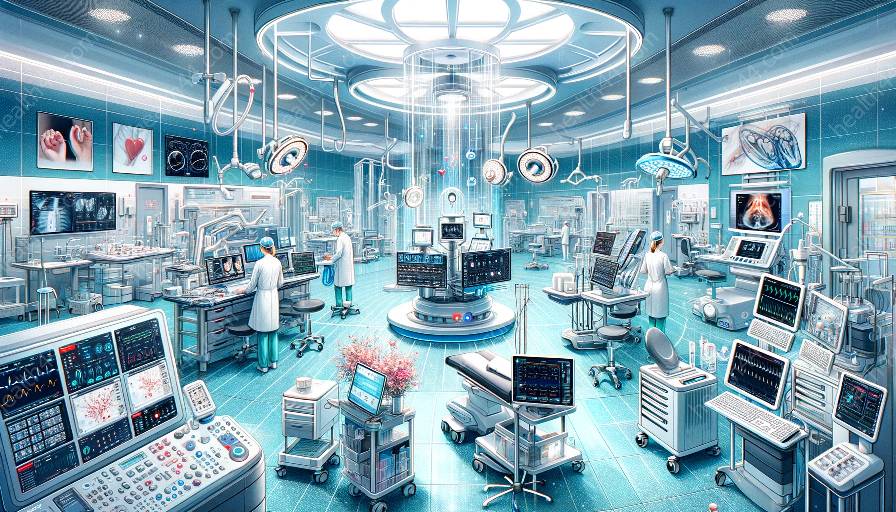The human respiratory system plays a vital role in sustaining life by providing the body with oxygen and expelling carbon dioxide. In this detailed exploration, we will delve into the anatomy and physiology of the respiratory system, as well as the medical devices used to support its functions.
Anatomy and Physiology of the Respiratory System
The respiratory system is a complex network of organs and tissues that work together to facilitate the exchange of gases between the body and the external environment. It consists of several key components:
- Nose and Nasal Cavity: The nasal passages and the nasal cavity warm, moisten, and filter the air as it enters the respiratory system.
- Pharynx: The pharynx, or throat, serves as a passageway for air traveling to and from the nasal cavity and the mouth.
- Larynx: The larynx, or voice box, contains the vocal cords and helps with breathing and producing sound.
- Trachea: The trachea, also known as the windpipe, connects the larynx to the bronchi and transports air to and from the lungs.
- Bronchial Tree: The bronchial tree consists of the bronchi, bronchioles, and alveoli, which are responsible for the exchange of gases in the lungs.
- Lungs: The lungs are the primary organs of the respiratory system, where the exchange of oxygen and carbon dioxide takes place.
- Diaphragm: The diaphragm is a dome-shaped muscle that separates the chest cavity from the abdominal cavity and plays a crucial role in breathing.
The respiratory system's function is to supply the body with oxygen and eliminate carbon dioxide, a waste product of cellular metabolism. During inhalation, the diaphragm and intercostal muscles contract, causing the chest cavity to expand and air to be drawn into the lungs. Oxygen from the inhaled air diffuses into the bloodstream, while carbon dioxide moves from the blood into the alveoli to be exhaled during exhalation.
Medical Devices for Respiratory Health
Several medical devices are used to diagnose and manage respiratory conditions, as well as to support individuals with compromised respiratory function. Some of the key medical devices include:
- Pulmonary Function Test (PFT) Machines: These devices measure lung capacity and the rate of air flow in and out of the lungs, aiding in the diagnosis of respiratory conditions such as asthma and chronic obstructive pulmonary disease (COPD).
- Nebulizers: Nebulizers are devices that convert liquid medication into a fine mist that can be inhaled into the lungs, often used to deliver medications for conditions such as asthma or cystic fibrosis.
- Oxygen Concentrators: Oxygen concentrators are used to provide supplemental oxygen to individuals with low blood oxygen levels, often due to conditions like chronic respiratory failure or emphysema.
- Positive Airway Pressure (PAP) Machines: PAP machines, such as continuous positive airway pressure (CPAP) and bilevel positive airway pressure (BiPAP) devices, are commonly used to treat sleep apnea by providing a continuous flow of air to keep the airways open.
- Ventilators: Ventilators are life-saving devices that support individuals with severe respiratory failure by assisting with breathing and oxygenation.
- Pulse Oximeters: These devices are used to measure the oxygen saturation of arterial blood, providing valuable information about the efficiency of the respiratory and circulatory systems.
Now that we have examined the anatomy and physiology of the respiratory system and the medical devices used to support respiratory health, let's explore some common respiratory conditions and their impact on the body.
Common Respiratory Conditions
Respiratory conditions can significantly impact an individual's quality of life and overall wellbeing. Some of the most common respiratory conditions include:
- Asthma: Asthma is a chronic condition characterized by inflammation and narrowing of the airways, leading to recurrent episodes of wheezing, coughing, chest tightness, and shortness of breath.
- Chronic Obstructive Pulmonary Disease (COPD): COPD encompasses a group of progressive lung diseases, including emphysema and chronic bronchitis, that make it difficult to breathe due to airflow obstruction and damage to the air sacs in the lungs.
- Cystic Fibrosis (CF): CF is a genetic disorder that affects the lungs and digestive system, leading to the production of thick, sticky mucus that clogs the airways and makes breathing difficult.
- Pneumonia: Pneumonia is an infection that inflames the air sacs in one or both lungs, causing cough, fever, chills, and difficulty breathing.
- Lung Cancer: Lung cancer occurs when abnormal cells grow uncontrollably in one or both lungs, often leading to symptoms such as persistent cough, chest pain, and shortness of breath.
Understanding these common respiratory conditions is crucial for early detection, diagnosis, and effective treatment. Additionally, maintaining respiratory health through proper nutrition, regular exercise, and avoidance of environmental pollutants can significantly reduce the risk of developing respiratory conditions.
Conclusion
The respiratory system is a marvel of biological engineering, allowing for the exchange of oxygen and carbon dioxide essential for sustaining life. By understanding its anatomy and physiology, as well as the medical devices used to support respiratory health, we can appreciate the intricate mechanisms that enable us to breathe and thrive. With this awareness, we can take proactive steps to maintain respiratory wellness and seek timely medical intervention when needed.
In conclusion, the respiratory system is a remarkable and vital component of human physiology, deserving of our attention and care to ensure optimal functioning and wellbeing.


